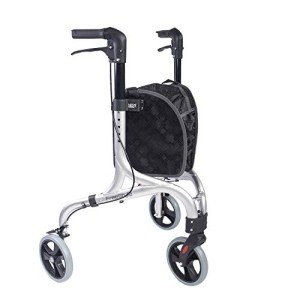In the pursuit of adaptability and ease, the modern walker has actually evolved from a basic mobility aid into a sophisticated gadget created to enhance the quality of life for individuals with restricted mobility. Whether due to age, injury, or disability, the requirement for effective mobility options is universal. This post will dig into the qualities, benefits, developments, and considerations surrounding modern walkers, along with a regularly asked questions (FAQ) section to answer common queries.
Conventional walkers, Rollator Accessories typically constructed from aluminum or steel, normally feature a rectangle-shaped frame with four legs and no wheels. These fundamental models provide stability but can be troublesome, needing users to lift the device instead of push it. As a result, their use often positions unnecessary pressure on the upper body and reduces mobility effectiveness.

In the previous couple of decades, the style and functionality of walkers have actually transformed substantially. Modern walkers typically include features such as:
This evolutionary shift not only supports better mobility but also increases self-confidence, independence, and safety for users.
Modern walkers come with a variety of benefits for individuals seeking support in mobility. These benefits transcend mere physical support, contributing favorably to psychological and psychological health as well.
Modern walkers empower users to navigate their environment more freely. Features such as wheels and lightweight styles assist in ease of movement, permitting users to keep autonomy in daily activities.
The incorporation of safety functions in modern walkers plays an essential function in preventing falls and injuries. Anti-slip grips and bigger bases of assistance add to stability, therefore reassuring users about their safety while walking.
Many modern walkers offer multifunctional designs, acting as both a mobility aid and a storage solution. With functions like built-in bags and trays, users can bring fundamentals and personal products, making getaways with these walkers easier.
Enhanced mobility can significantly affect a person's mental health. Less dependence on caregivers and the capability to take part in social interactions can foster a sense of belonging and enhanced spirits.
When picking a modern walker, different functions should be taken into consideration to ensure it satisfies the user's requirements efficiently. Here, we supply a list of crucial factors to consider:
The market today offers a range of walker types customized to various needs. Below are some common choices:
| Walker Type | Secret Features | Best For |
|---|---|---|
| Requirement Walker | Lightweight, no wheels | Optimum stability |
| Rolling Walker | 4 wheels, often a seat | Increased mobility |
| Upright Walker | Promotes upright posture | Pain in the back alleviation |
| Transport Walker | Compact and lightweight | Caregivers and brief ranges |
The very best walker for seniors mostly depends on their physical condition and mobility levels. Many choose rolling walkers due to their ease of use, while those with greater stability requirements might gain from basic walkers.
To make sure a correct fit, stand inside the walker with your arms hanging comfortably at your sides. Your elbows need to be somewhat bent when holding the walker manages. Change the height till it aligns perfectly.
Yes, many modern walkers are created to fold for easy transportation. Designs such as transportation walkers are particularly lightweight and compact, making them ideal for travel.
Numerous insurance coverage plans, consisting of Medicare and Medicaid, might cover the expense of walkers when prescribed by a health care service provider. It is recommended to validate protection details with your insurance provider.
Regular checks should be performed for any loose screws, frame stability, and wheel functionality. Clean the walker periodically to maintain hygiene and curb wear.
The modern walker represents a significant improvement in mobility aids, boosting the independence and self-confidence of users. With different types, functions, and factors to consider offered, selecting the best walker can greatly enhance mobility and total quality of life. Comprehending these tools empowers users, caretakers, and health care experts alike to promote a helpful, active neighborhood for those needing help in mobility. The modern walker is not simply a device; it is a bridge to liberty and independence.